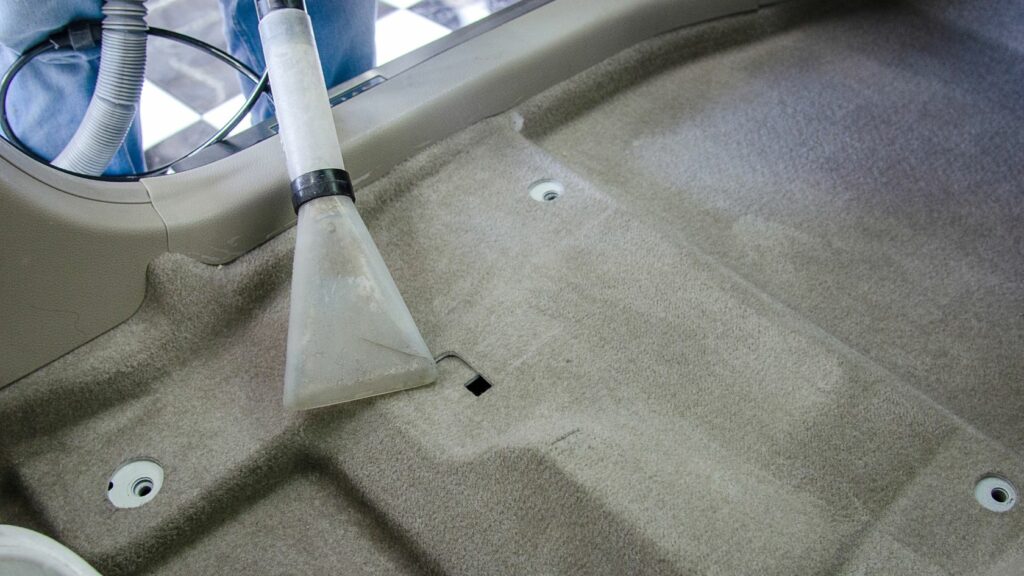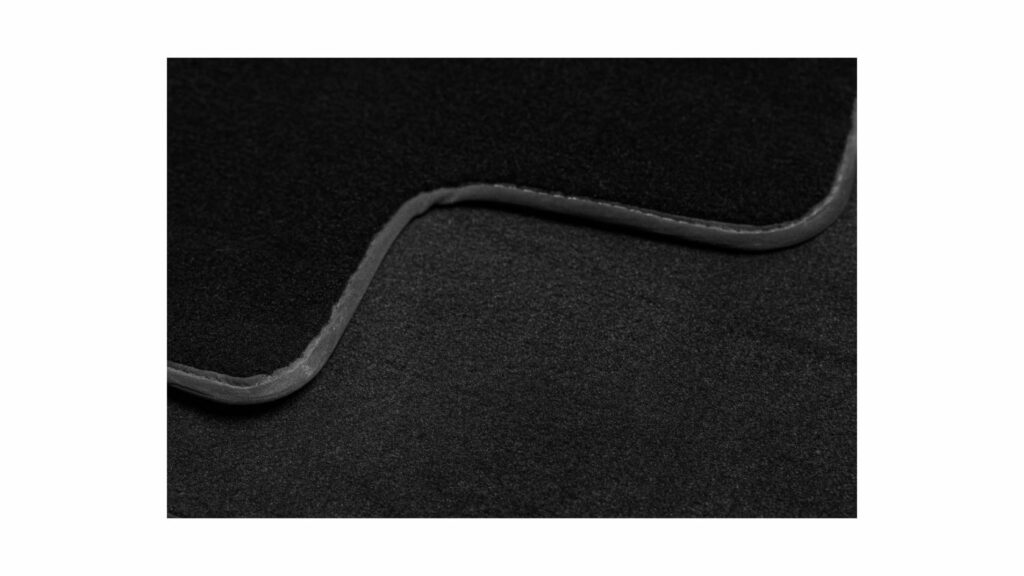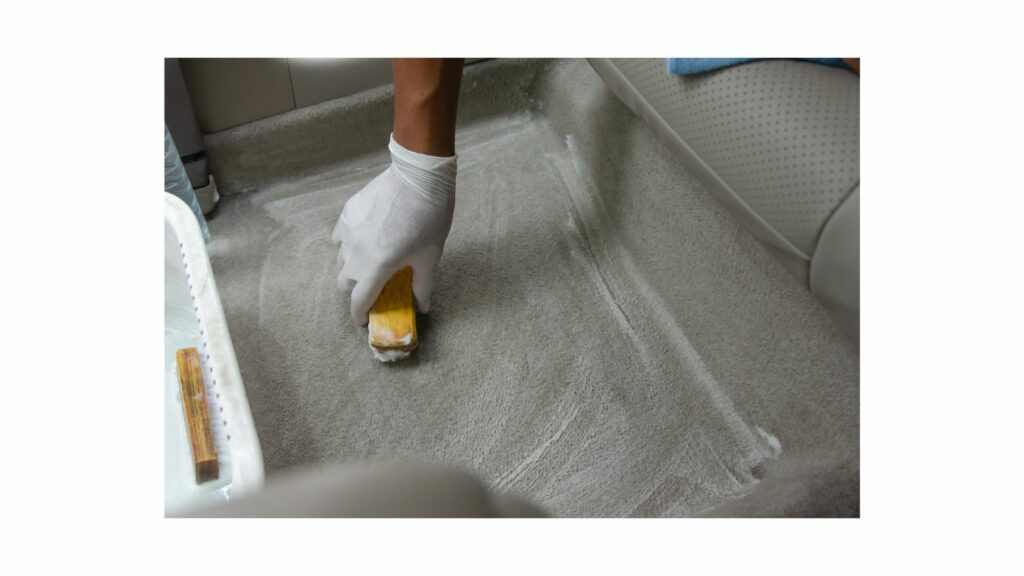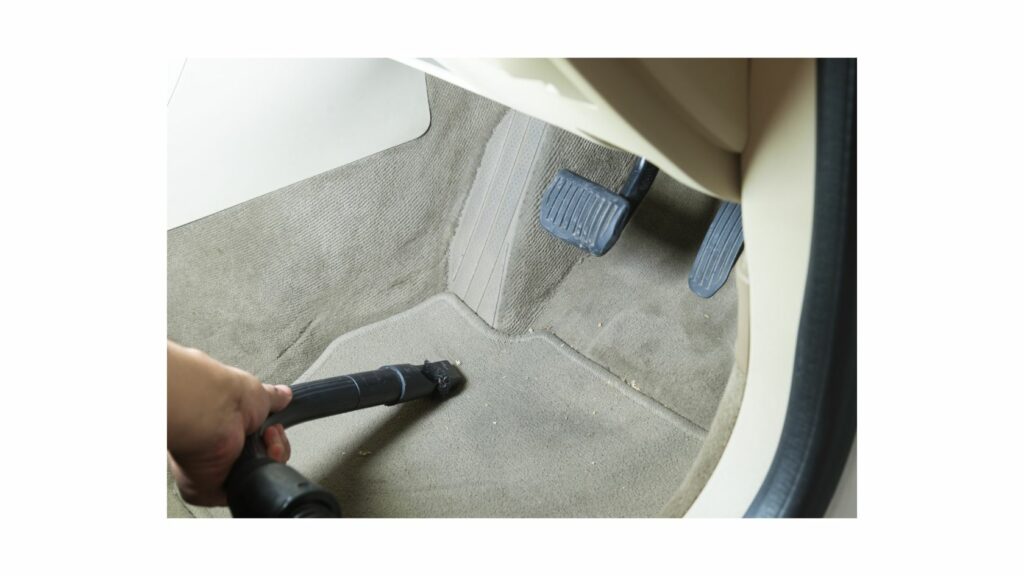
For some reason, car carpets can be an absolute nightmare to vacuum. Ask the motorists who struggle to extract every last bit of dirt and debris from its intricate fibers and keep pondering: Why is car carpet so hard to vacuum?
Is it the unique car carpet material that poses a challenge? Or are there specific techniques and ways to vacuum car carpets that we have yet to discover?
In this article, we will unravel the mysteries behind this vexing dilemma and equip you with the knowledge and insights needed to conquer the elusive art of car carpet vacuuming.
So, prepare to delve into the fascinating world of automotive interior cleanliness, where dust bunnies reign and cleanliness is a never-ending battle.
Why is car carpet so hard to vacuum?
Car carpets are hard to vacuum because of the densely woven loop-pile construction. Most car carpets are designed with high-quality synthetic fiber to withstand wear and tear while effectively trapping debris and dirt.
The fibers are also used to provide a touch of luxury for improved appearance. In such a scenario, regular vacuuming alone may not be sufficient to remove all the embedded particles.
Additionally, the small and intricate spaces in a car make it difficult to reach all the nooks and crannies with a standard vacuum cleaner.
To effectively clean car carpets, specialized tools such as crevice attachments and upholstery brushes are necessary.
Related Read: 9 must-have accessories for your car vacuum cleaner
Furthermore, using a high-powered vacuum with strong suction can help dislodge stubborn dirt and debris. Taking the time to thoroughly vacuum your car carpet will ensure a cleaner and healthier interior.
Understanding the car carpet
When it comes to car interiors, the carpet plays a crucial role in both aesthetics and functionality. Let’s delve into the key aspects of car carpets that every car owner should know.
Carpet Material – The type of carpet material used in cars can vary, but it’s often a synthetic blend designed for durability and stain resistance. Common materials include nylon, polyester, or a combination of both.

Knap of the Carpet -The Knap refers to the direction of the fibers on the carpet surface. It can affect the appearance and texture of the carpet.
For example, a carpet with a smooth, uniform knap gives a sleek and modern look, while a more textured knap adds depth and visual interest.
Loop-Pile Construction – Many car carpets feature a loop-pile construction. This means that the fibers are woven into loops, creating a dense and sturdy carpet surface. The loop-pile design is chosen for its durability and ability to withstand heavy foot traffic.
Quality of Fiber – The quality of the fiber used in the carpet greatly influences its performance and longevity. High-quality fibers are more resistant to wear and fading, ensuring that the carpet maintains its appearance for longer.
Absorption Feature – Car carpets often have an absorption feature that helps trap and hide dirt, spills, and debris. This is especially useful for maintaining a cleaner-looking interior. However, it also means that the carpet can be more challenging to clean thoroughly.
Understanding these aspects of car carpets can help you make informed decisions when it comes to maintenance and cleaning.
Regular vacuuming and occasional deep cleaning are essential to keep your car carpet in top condition.
What is the best way to vacuum a car carpet?
Keeping your car carpet clean is essential for maintaining a fresh and inviting interior. To effectively vacuum your car carpet and remove dirt and debris, follow these expert tips:
Using a good brush to loosen the dirt – Before vacuuming, take a soft-bristle brush and gently agitate the carpet fibers. This helps to loosen embedded dirt and makes it easier for the vacuum to pick up.

Using appropriate attachments for cleaning – Utilize the crevice tool to reach into tight spaces between seats and along the edges of the carpet. For larger areas, use the upholstery brush attachment to thoroughly clean the carpet surface.
Compressed air while vacuuming – For those hard-to-reach corners and crevices, using compressed air can be highly effective. It helps dislodge dust and debris, making it easier for the vacuum to remove them.
Hot water extraction – Consider using a hot water extraction method for a deep and thorough clean. This involves using a carpet cleaning machine specifically designed for cars. The hot water and cleaning solution helps break down stubborn stains and lift dirt from the carpet fibers.
Appropriate cleaner – If you encounter tough stains on your car carpet, choose an appropriate cleaner. Look for cleaners specifically formulated for automotive carpets, as they are designed to tackle grease, oil, and other common stains found in cars.
Incorporating these techniques into your car carpet cleaning routine can help you achieve a spotless and fresh interior.
Remember to vacuum regularly to prevent dirt and debris from accumulating, and don’t forget to pay attention to the nooks and crannies where dust tends to hide.
A clean car carpet not only enhances the overall aesthetics but also contributes to a healthier and more enjoyable driving experience.
How do you vacuum high-pile carpets?
Vacuuming high-pile carpets requires a specific approach to effectively remove dirt and maintain its plush appearance. Here are some essential tips:

- Adjust the vacuum cleaner’s height setting to a higher position to accommodate the deeper carpet fibers.
- Use a vacuum cleaner with strong suction power to penetrate the thick pile and lift dirt effectively.
- Consider using a vacuum cleaner with a brush roll or beater bar to agitate the carpet fibers and dislodge embedded debris.
- Slowly and methodically vacuum in multiple directions to ensure thorough cleaning, allowing the vacuum to reach deep into the pile.
- Pay extra attention to high-traffic areas and spots where dirt tends to accumulate, such as near entryways or in front of furniture.
How do you vacuum hard-to-reach places in a car?
Vacuuming hard-to-reach places in a car may seem challenging, but with the right techniques and tools, it becomes easier. Here are some effective methods:
- Use a crevice tool attachment to access narrow gaps and tight spaces between seats, along the edges of the carpet, and in console compartments.
- Attach an upholstery brush to your vacuum cleaner to clean fabric surfaces, including the dashboard, door panels, and seat upholstery.
- For small, intricate areas like air vents or between buttons, use a soft-bristle brush or a detailing brush to dislodge dust and debris before vacuuming.
- Extendable hoses or wands can provide additional reach, allowing you to access difficult spots such as under the seats or deep into the trunk.
Final thoughts
Car carpet presents unique challenges when it comes to vacuuming due to its specific material and features.
The dense loop-pile construction, chosen for its durability, tends to trap debris deep within the fibers, making it difficult to remove with a standard vacuum cleaner.
However, by employing the best way to vacuum car carpets, such as using appropriate attachments, employing brushing techniques, and considering methods like hot water extraction, you can effectively tackle this task.
Regular and thorough vacuuming, coupled with proper maintenance, will help keep your car carpet clean and prolong its lifespan.
By understanding the intricacies of car carpets and implementing the right techniques, you can ensure a fresh and inviting interior for your driving pleasure.
